Trade Show Design Trends: Multi-Purpose Custom Design
Most companies end up purchasing several kinds of displays to work for different types of events. 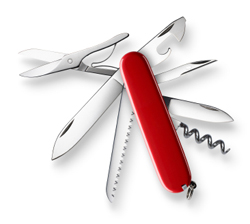 For small, local shows they have tabletop and standing displays, table covers in various sizes, and portable trade show stands. For larger spaces, they have modular displays. And for their “big show” they have a custom exhibit.
For small, local shows they have tabletop and standing displays, table covers in various sizes, and portable trade show stands. For larger spaces, they have modular displays. And for their “big show” they have a custom exhibit.
Now, some companies are asking a lot more from their trade show design firm. They want to invest in trade show exhibits that can be used for many types of events, will hold up to a lot of uses but still look new, and that can be easily updated for new shows. They are commissioning Multi-Purpose Custom Exhibits.
These companies are investing in large custom exhibits that are composed of components that can be used in smaller booths. In some cases, it is as simple as cleverly designing a large backwall so that a 10-foot section can be used in a small booth. In others, an elaborate custom space with stages, interactive displays, meeting area and merchandise fixtures is created for a large island booth at a major trade show. After the show, many of the components can be reconfigured to use for smaller exhibits.
Multi-Purpose Custom Design has financial benefits
The main motivation for moving to Multi-Purpose Custom Design is financial. Sometimes the initial custom display is a bit more expensive but most companies experience savings in the first year.
Brand consistency across all shows
Because all of the components for trade show displays are done at the same time, it is easier to maintain brand integrity. There is consistency in graphics, colors, copy positioning, and product displays.
How to start work on a Multi-Purpose Custom Design
Put together a list of all the shows on your Trade Show schedule along with planned booth sizes. Make sure to gather any special exhibit requirements. Determine how long the exhibit will be used. Is it for a year, or for longer? Define your marketing goals and how the exhibit will be tied into your company’s overarching brand campaign. Then select a custom design firm that understands how to create Multi-Purpose Custom Exhibits.
Yes, it takes a bit more planning in the beginning but the benefits are worth the effort.
Tips for Designing Effective Exhibit Graphics
Exhibit design is a powerful reflection of your brand and, in fact, part of your branding. Trade show booths involve your company logo, products and employees. They serve as giant, interactive business cards.
So, even if you’re not making a huge investment in exhibit design, it’s worth revisiting the core elements of your branding to make sure all the pieces of the puzzle fit together. Here, we’ll take a quick look at graphically and lyrically spicing up your exhibit booths.
Trade Show Graphic Design
A competent exhibit company should be able to provide you with exhibit designs that effectively communicate your brand. You may even wish to incorporate into this process your in-house or consulting graphic designer.
- Embrace your three-dimensionality. Most of your branding materials are probably flat, “conventional” pieces. Graphic designers jump at the opportunity to work with exhibit designers to breathe fresh life into larger, 3D displays.
- Maintain focus. While it’s tempting to incorporate every bell and whistle within your budget, visitors will lose interest quickly if they can’t figure out what’s going on. Speak to your specific offerings and value-added features relatively early in the engagement process.
- Consistent with the 3D theme, reach out and grab your audience’s attention. You’re not only trying to engage people at your booth but those down the aisle and across the room.
Trade Show Custom Copy
 A bit more innovation is possible with your written materials than with your brand graphics. While you can’t and shouldn’t change your logo for every trade show, show-specific copy is an excellent idea.
A bit more innovation is possible with your written materials than with your brand graphics. While you can’t and shouldn’t change your logo for every trade show, show-specific copy is an excellent idea.
Written materials can be customized–partially, at least–for each trade show you participate in. Keep everything as short and concise as possible. Making sure that the information is timely will help you to stand out from the crowd, especially if your competitors’ materials have gone stale. Engage your customers and support your sales and marketing strategies with a custom trade show booth.
Design Effective Tradeshow Graphics and Maximize ROI
Graphics Are the Most Important Design Element of Your Trade Show Display
For the vast majority of tradeshow displays, the graphics are the most important design element. No matter how beautiful a display is, if you hang poorly designed graphics on it, it just looks awful. And attractive graphics aren’t enough – they must be effective as well if you want to get the maximum ROI on your tradeshow dollars. In order to get the best graphic design results, you should start by carefully considering your objectives and how your tradeshow display’s graphics might help you achieve them.
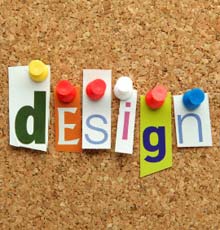 Too often, companies choose to just blow up their logo and a few of their magazine ads or a page from their website, stick them on the backwall and call it a day. People who view a web page or magazine ad spend considerably more time reading and also expect to get complete information from this type of graphic. Tradeshow graphics, on the other hand, need to be read and understood in the 3 seconds that it takes an attendee to walk past your booth.
Too often, companies choose to just blow up their logo and a few of their magazine ads or a page from their website, stick them on the backwall and call it a day. People who view a web page or magazine ad spend considerably more time reading and also expect to get complete information from this type of graphic. Tradeshow graphics, on the other hand, need to be read and understood in the 3 seconds that it takes an attendee to walk past your booth.
Let’s consider the graphics on a standard 10-foot backwall display. The normal way to arrange graphics is to put your company’s name and logo on a large sign at the top. This is just fine if your company is Coca-Cola, or Nike, but lesser known brands might want to add a few words that describe what the company does or maybe a bold statement that grabs the attention of the visitor.
Design Graphics to Support Your Sales Presentation
The balance of the graphics in a small booth can be used to create an atmosphere, list features and benefits of products or show products in use. I prefer to design graphics that support a sales presentation. Once a prospect has stopped at your booth, the booth staff can easily do a brief sales presentation using the graphics as visual support.
Once you have established your objectives, it makes sense to take advantage of the experience an exhibit designer brings to the table. Share with them your goals and allow them to provide input on graphics that are going to be displayed.
Signage at Tradeshows: How Big is Too Big?
All companies that exhibit at tradeshows want their name to be the most prominent in the convention center. At large shows with hundreds of exhibits this is obviously not possible. When you walk into the exhibit hall, you are confronted with sea of visual clutter. So what is the correct approach to signage in your booth?
Consider this:
Exhibit signage breaks down into 3 basic categories, long, medium and short range graphics. Each of these categories serves a practical purpose.
Long Range Graphics
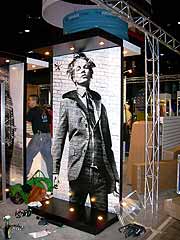 These are most often corporate identification graphics. In island or peninsula displays, they can be large signs that are placed at the maximum height allowed by the show. They are sometimes suspended from the convention center ceiling (where permitted) or can be supported from the floor on tall columns. The purpose of long range graphics is to allow visitors to locate your exhibit from the entrance of the hall or at least from several aisles away. Most companies want these signs to be as large as possible, so they can’t be too big. When every exhibit has these large signs, they lose their effectiveness. Sometimes adding lighting or rotating the signs will add interest. These types of signs are generally not permitted in backwall displays.
These are most often corporate identification graphics. In island or peninsula displays, they can be large signs that are placed at the maximum height allowed by the show. They are sometimes suspended from the convention center ceiling (where permitted) or can be supported from the floor on tall columns. The purpose of long range graphics is to allow visitors to locate your exhibit from the entrance of the hall or at least from several aisles away. Most companies want these signs to be as large as possible, so they can’t be too big. When every exhibit has these large signs, they lose their effectiveness. Sometimes adding lighting or rotating the signs will add interest. These types of signs are generally not permitted in backwall displays.
Medium Range Graphics
As visitors get closer to your exhibit, it is important to show them who you are and what you do. At 20 feet away from an island booth, the visitor would need to look straight up to read your large overhead sign, so medium range graphics should include your corporate identification. Individual product names and informative tag lines are appropriate at this level. In smaller displays, medium range graphics are the only corporate identification and should clearly state who you are and what you do. Medium range graphics should be large enough to be read from a reasonable distance but not too large to interfere with the exhibit design. They should be positioned at or just above eye level.
Short Range Graphics
Signs of this nature include any graphic that can only be read while standing in or very near the display. They usually include product or brand identification signs and can include more detailed information since you are conveying information to interested attendees, not trying to lure them to your display. Features, benefits, specifications and installation examples are perfect for short range graphics. These signs do not need to be very large and should be placed just below eye level for ease of view.
While these are very basic guidelines, they will result in well-designed, effective and cost effective exhibits.
Need a unique and effective tradeshow booth idea? We can help you create a custom trade show exhibit that creates a buzz about your brand and increases your booth traffic, all within your budget. Let’s Talk.
Why You Should Replace Traditional Graphics With Flat Screen Displays
Situation: You are getting ready to exhibit at your most important show of the year. You pull your exhibit out of the warehouse and realize that the graphics and entire exhibit looks outdated and tired. You need to update, but your budget is limited. You can’t afford to replace your entire trade show booth – you can’t afford to fade into the background at this show.
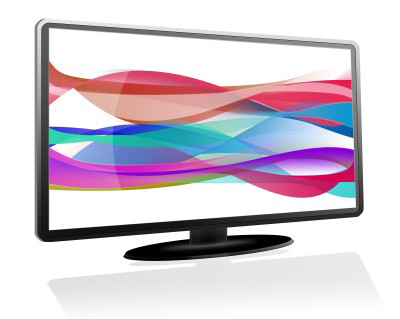
One Solution: Replace your exhibit graphics with flat screen display monitors and a media player.
There are many ways to update and refresh an outdated trade show exhibit. Increase booth impact by replacing graphics with digital displays will add a high-impact look to your display and help bring it up to speed with newer, more high-tech exhibit properties.
Converting your graphics to flat screen digital displays can involve greater up-front costs than just replacing the graphic panels, but you will be building longevity and flexibility into your exhibit. Plus, adding digital display monitors has other benefits:
- You may be able to save on graphics production unless you create very elaborate digital presentations.
- You can create attractive dynamic signage that will attract attention and draw more people into your booth.
- You can quickly update your messaging by creating new content.
- You can affordably adjust your brand presentation and featured products for each show’s specific market.
- You can create presentations that will help customers visualize what you can do for them.
Updating your trade show booth with digital display monitors and a dynamic presentation can help you attract trade show attendees and encourage more of them to buy your products or services.
Need help with updating your trade show display? We can help. Let’s talk.
Design for Success: Branded Trade Show Booths Generate Sales
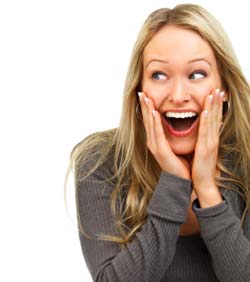 A trade show exhibit is a rare opportunity to surround your key prospects with your brand experience. An exhibit is not an impersonal 2-D experience like a TV commercial. It is not virtual and passively interactive like your company website. An exhibit can be a real 360-degree brand experience, alive with people and almost completely in your control.
A trade show exhibit is a rare opportunity to surround your key prospects with your brand experience. An exhibit is not an impersonal 2-D experience like a TV commercial. It is not virtual and passively interactive like your company website. An exhibit can be a real 360-degree brand experience, alive with people and almost completely in your control.
When you invite key prospects into a 360-degree brand experience, your booth has a chance to be one of those few memorable moments from the entire show. And the exhibitors who create these memorable moments are almost always the show sales leaders.
Be true to your brand position and personality.
Make sure that you start out with a platform that is consistent with your brand position and personality. If you are a technology company, you can be playful and use a comic book superhero theme. On the other hand, the same theme is probably not appropriate for a health care benefits company who needs to establish credibility and trust. Similarly, if your company manufactures euro-design furniture, your booth can be sleek, experimental and minimalistic. But if your company makes traditional American style furniture with a focus on fine craftsmanship, your booth design should reflect that heritage.
“Surprise and Delight” your target customers.
To create a memorable moment with your booth, you need an overarching theme and concept that will surprise and delight your target customers. You are looking for something that will break out of the endless sea of logos, photos of smiling customers, and product images. Based on surveys of trade show attendees and exhibitors, the memorable booths are not the biggest booths, they are the ones that had one big idea and focused on it.
I can’t give you a list of foolproof big ideas. You’ll need to work with your team and exhibit design company to create the concept. I can pass on one secret – get your internal and external team members to think only about your brand and what would really “Surprise and Delight” your target customers. Don’t be distracted by what your competition did last year or even what your company did last year. Brainstorm first, then evaluate the ideas once you have a list.
Once you have a concept, everything else will fall into place.
One unifying concept will pull everything together. If you have multiple products or divisions involved with the show, use the concept to unify everything. Make sure every aspect of the entire exhibit – accessories, product displays, signage and lighting – builds on the big idea.
And never forget: when it comes to a great trade show exhibit, less is more really applies. Focus relentlessly on your brand and your concept.
Make a Big Impact With a Small Trade Show Exhibit
You may be planning a small trade show booth, but that doesn’t mean that you can’t make a big impact. Here are a few ways to make any exhibit a big win.
Keep it simple
Your exhibit will stand out if you create a very simple booth. Keep it uncluttered, only include the essentials, and make it open and inviting.
Look professional
Make sure that every aspect of your booth is professional – from your exhibit, to your sales collateral, to your booth staff. A professional looking booth is critical to building credibility and to attracting traffic.
Be dramatic
Use distinctive materials, tension fabrics, woods, colored metal and layered graphics to present a current look and build visual interest.
 Think tall
Think tall
Design a booth that incorporates one tall element that is visible above the crowd. It can be as simple as an overhead sign with a unique design, shape and movement, or something more unusual like moving lights on a group of hanging banners.
Get the best booth staff
In a small booth, the staff can be the difference between engaging attendees and just blending into the background. Make sure to have an outgoing, knowledgeable team at the show.
Start your marketing before the show
About 75% of show attendees decide on exhibit visits and seminar attendance in advance. Set up meetings with clients, prospects, and press ahead of time.
Follow-up after the show
Don’t let one hot lead fall through the cracks; make sure to follow-up all the qualified leads after the show.
It doesn’t matter if your trade show exhibit is the largest at the show or a smaller booth, the same principles of great trade show presentation still apply. Make sure your trade show exhibit stands out from the rest of the show, that your team executes flawlessly and every element works to bring your brand to life.
Trade Show Design Secrets: Keep It Simple!
What stands out at a major trade show or fair? Bright colors, bold designs, and simplicity. This is not news, yet trade shows remain filled with booths that are too complex and too cluttered – booths that attendees do not recall seeing because they make no impression.
The most common cause of a cluttered booth is trying to accomplish too many objectives. Generally, if you are overly ambitious, you will end up falling short on every goal. But if you are willing to make some choices, your exhibit can be brilliant. Check out Trade Show Exhibit Design: The Creative Brief for some valuable planning tips that will help you to make an impression.
A focused message
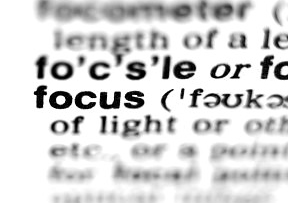 Think about what you really want to communicate with your booth display and write it down. If it is one, focused goal, then you are on the right track. Once you have a singular mission, work with your design team to bring it to life. Focus on your one main message. Carry that message into everything you present at the trade show – your booth, collateral, merchandise presentation, sales pitch, staff clothing, everything.
Think about what you really want to communicate with your booth display and write it down. If it is one, focused goal, then you are on the right track. Once you have a singular mission, work with your design team to bring it to life. Focus on your one main message. Carry that message into everything you present at the trade show – your booth, collateral, merchandise presentation, sales pitch, staff clothing, everything.
Keep your booth open and inviting
Eliminate anything and everything that creates a barrier to attendees or will overwhelm them with unnecessary information. A few examples:
- Be clear and straightforward about your company. Don’t tell your complete corporate history – only what is needed to make the sale.
- Present a few products merchandised to showcase your most important products. A booth packed with a deep product assortment will just become clutter.
- Banner graphics can be great unless they are filled with complex graphic images or too many words and logos. If you want people to actually read what is on your banners, limit the amount of information you put on them.
It all sounds so simple, but choices are always difficult.
To create a singular, power statement you have to be willing to make some hard choices. I usually start with an empty space and challenge myself to only put in what is essential. Maybe the product display should only include your newest products. One large multipurpose element can often replace several small elements and eliminate a lot of clutter. Look for ways to build in storage to hide extra sales literature and other supporting materials.
Be remembered.
Your trade show exhibit will be more effective and more memorable if it makes a clear statement about your company and your products. Question everything and, if something does not support your core message, do not let it into your exhibit.
If you want your trade show booth to be the star of the show, you have to have one message and it has to have a chance to be seen.
Archives
- July 2021
- June 2021
- May 2021
- April 2021
- October 2018
- September 2018
- August 2018
- July 2018
- June 2018
- May 2018
- April 2018
- March 2018
- February 2018
- January 2018
- December 2017
- November 2017
- October 2017
- September 2017
- August 2017
- July 2017
- June 2017
- May 2017
- April 2017
- March 2017
- February 2017
- January 2017
- December 2016
- November 2016
- October 2016
- September 2016
- August 2016
- July 2016
- June 2016
- May 2016
- April 2016
- March 2016
